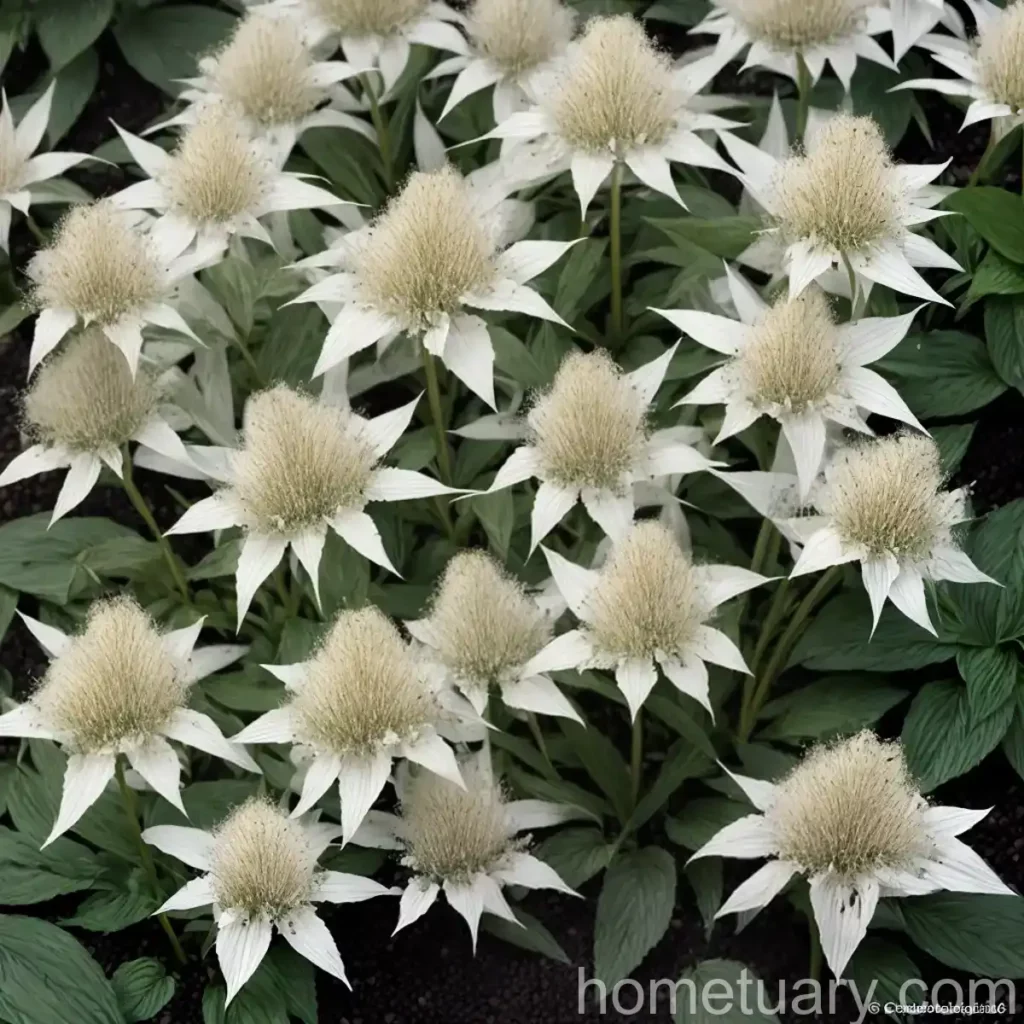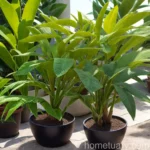Bugbane (Actaea ‘Chocoholic’): A Comprehensive Guide
Introduction to Bugbane
Bugbane, scientifically known as Actaea ‘Chocoholic’, is a captivating perennial plant that adds a touch of elegance to any garden or landscape. Its unique name can be intriguing, and it indeed leaves a lasting impression once you encounter its remarkable beauty. In this extensive guide, we will explore the various facets of bugbane, from its cultural requirements to its uses, diseases, and maintenance tips.
Dive into the enchanting world of bugbane as we uncover the essential knowledge needed to cultivate, appreciate, and preserve this remarkable plant.
Key Takeaways
Before delving into the in-depth exploration of bugbane, let’s take a moment to capture the essence of this plant through some key takeaways:
- Bugbane (Actaea ‘Chocoholic’) is a perennial plant known for its stunning and unique characteristics.
- This plant requires adequate sunlight, well-drained soil, and regular watering for optimal growth.
- It can be used in various landscaping settings, adding ornamental value and attracting pollinators.
- Bugbane may be susceptible to certain diseases and pest infestations, requiring attention and proper care to maintain its vitality.
- The plant can be propagated through division and is well-suited for container gardening.
- It is a versatile plant with both aesthetic and practical applications, making it a valuable addition to any garden or landscape.
Now, let’s delve deeper into the intricacies of bugbane, exploring its culture, uses, maintenance, and more.
Bugbane (Actaea ‘Chocoholic’) Plant Profile
Before we delve into the specifics of bugbane’s care, uses, and characteristics, let’s familiarize ourselves with its botanical profile. Understanding the fundamental aspects of this plant will provide a solid foundation for its cultivation and appreciation.
| Key Information | Description |
|---|---|
| Botanical Name | Actaea ‘Chocoholic’ |
| Common Name | Bugbane |
| Plant Type | Perennial |
| Flower Color | White or pink |
| Mature Height | 3-4 feet |
| Mature Spread | 2-3 feet |
| Sunlight Requirements | Partial to full shade |
| Soil Type | Well-drained, rich in organic matter |
| Watering Needs | Moderate to high |
| USDA Hardiness Zones | 4-8 |
From this overview, we can glean important insights into bugbane’s growth habits, environmental preferences, and typical appearance. Armed with this knowledge, we can now explore the various facets of this remarkable plant in greater detail.
Culture
Water
Bugbane plants thrive in moderately moist soil, making regular watering essential for their health and vitality. It is crucial to maintain consistent moisture levels, especially during periods of dry weather or prolonged heat. Adequate hydration promotes robust growth and enhances the plant’s overall resilience. However, it is important to avoid overwatering, which can lead to root rot and other detrimental conditions.
Sunlight
Bugbane plants exhibit a preference for partial to full shade, making them well-suited for woodland gardens, shaded borders, and other areas with limited direct sunlight. While they can tolerate some morning sun, prolonged exposure to intense rays should be avoided. Sufficient shade promotes the development of the plant’s delicate flowers and helps maintain its overall vigor.
Fertilizer
Applying a balanced fertilizer in early spring can provide bugbane plants with the essential nutrients needed for optimal growth and flowering. A slow-release fertilizer formulated for flowering perennials can be beneficial, ensuring a sustained supply of nutrients throughout the growing season. It is important to follow the manufacturer’s recommendations regarding application rates and frequency to prevent over-fertilization.
Soil
Bugbane plants thrive in well-drained soil that is rich in organic matter. Amending the soil with compost or organic mulch can improve its texture and fertility, creating an ideal growing environment for these perennials. Additionally, maintaining a slightly acidic to neutral soil pH can support the plant’s nutrient uptake and overall well-being.
Pruning
Pruning is an essential aspect of bugbane maintenance, contributing to the plant’s overall health, appearance, and longevity. During the late fall or early spring, spent flower stalks and any damaged or diseased foliage should be pruned to promote new growth and maintain a tidy appearance. Additionally, removing dead or decaying plant material can prevent the onset and spread of diseases, enhancing the plant’s resilience.
Propagation
Bugbane plants can be propagated through division, making it possible to create new specimens from established ones. The best time to divide bugbane is in early spring, as new growth emerges. By carefully dividing the plant’s root mass and replanting the divided segments in suitable locations, propagation can be achieved with relative ease. This method also presents an opportunity to rejuvenate older plants and expand bugbane populations in the garden.
Container Popularity
Bugbane’s stunning foliage and unique flowers make it a popular choice for container gardening. Its preference for partial to full shade aligns well with the conditions often found in container settings, making it an excellent option for beautifying shaded patios, balconies, and outdoor living spaces. When selecting a container for bugbane, it is important to choose one with ample drainage to prevent waterlogging, and to use a high-quality potting mix to provide the plant with essential nutrients and aeration.
Common Diseases
Like many plants, bugbane can be susceptible to certain diseases that may compromise its health and appearance. Understanding these potential ailments can help in their prevention and management, safeguarding the plant’s well-being. Some common diseases that may affect bugbane include:
- Powdery Mildew: Characterized by a white, powdery coating on the leaves, powdery mildew can weaken the plant and diminish its ornamental appeal.
- Leaf Spot Diseases: Fungal infections can lead to the development of unsightly spots on the foliage, impacting the plant’s overall vitality.
- Root Rot: Overly wet soil conditions can predispose bugbane plants to root rot, leading to wilting, yellowing foliage, and stunted growth.
Disease Diagnosis
Upon observing any signs of disease or decline in bugbane plants, it is important to promptly diagnose the issue to implement effective remedial measures. Careful examination of the plant, including its foliage, stems, and root system, can provide valuable insights into the nature of the problem. Additionally, consulting with a local extension service or a plant health specialist can offer expert guidance in accurately diagnosing and addressing the issue.
Common Pests
While bugbane plants are relatively resistant to pest infestations, certain insects may occasionally pose a threat to their well-being. Vigilance and prompt intervention are key to managing pest issues and preserving the plant’s vitality. Some common pests that may affect bugbane include:
- Aphids: These small, sap-sucking insects can lead to distorted growth and weaken the plant.
- Spider Mites: Infestations of spider mites can cause stippling on the leaves and a decline in overall plant health.
- Slugs and Snails: These voracious feeders can cause significant damage to bugbane foliage, particularly in moist environments.
Botanist’s Tips
As an esteemed botanist with a passion for horticulture, I offer the following tips to enhance your experience with bugbane (Actaea ‘Chocoholic’):
- Cultural Adaptability: Experiment with different growing conditions to determine the optimal environment for bugbane in your specific location, taking into account factors such as soil composition, moisture levels, and light exposure.
- Companion Planting: Consider pairing bugbane with complementary shade-loving plants to create visually appealing and ecologically beneficial garden designs.
- Year-Round Interest: Explore the potential for combining bugbane with other perennial plants that exhibit distinct seasonal interest, ensuring a dynamic and captivating garden display throughout the year.
Fun Facts
To further enrich your understanding and appreciation of bugbane, here are some intriguing and delightful fun facts about this remarkable plant:
- Bugbane’s unique name is derived from its historic use as an insect-repellent, particularly against certain biting pests, such as mosquitoes and gnats.
- In addition to its ornamental value, bugbane has been traditionally employed in folk remedies for various ailments, reflecting its historical significance beyond its aesthetic appeal.
- The plant’s striking, fragrant flowers have long been associated with enchantment and romance, adding a touch of allure to garden settings and natural landscapes.
Links to External Resources
- The Plant List – Actaea ‘Chocoholic’
- Royal Horticultural Society – Bugbane
- North Carolina State University Extension – Perennials for Shade
- University of Florida IFAS Extension – Pest Management for Landscape Plants
- Missouri Botanical Garden – Dividing Perennials
In conclusion, bugbane (Actaea ‘Chocoholic’) stands as a captivating and versatile addition to any garden or landscape, offering distinctive beauty, cultural adaptability, and practical utility. As you embark on your journey with bugbane, may this comprehensive guide serve as a source of inspiration, knowledge, and guidance, empowering you to cultivate and cherish this exceptional plant with confidence and appreciation.















